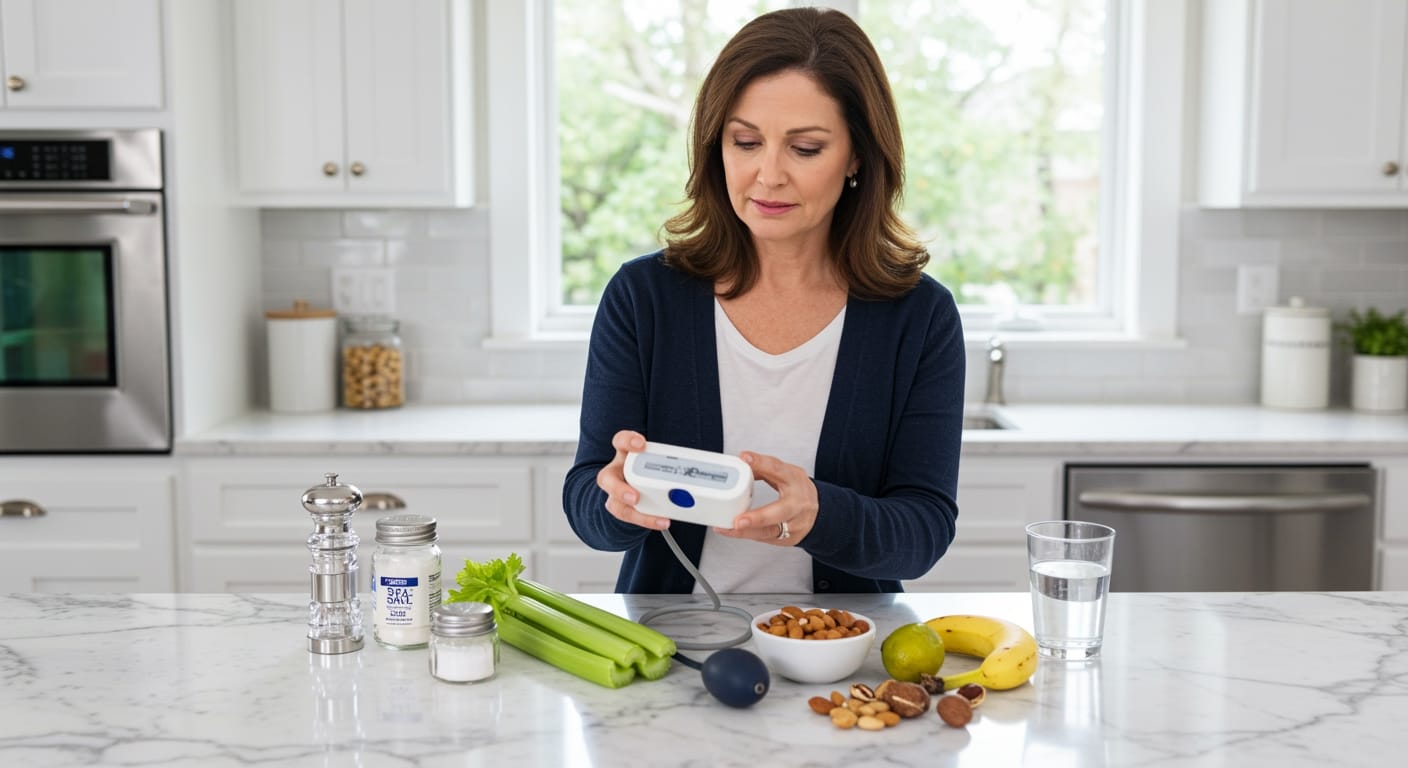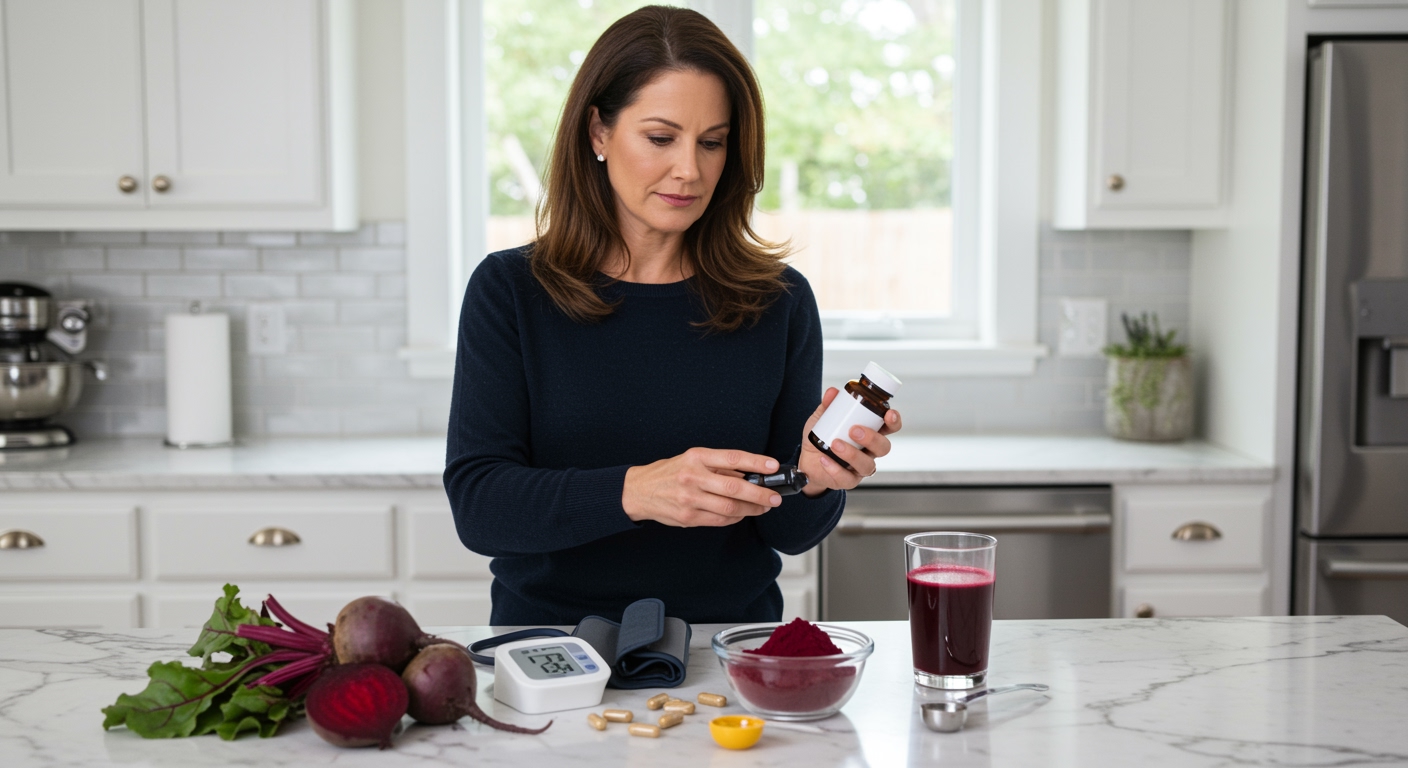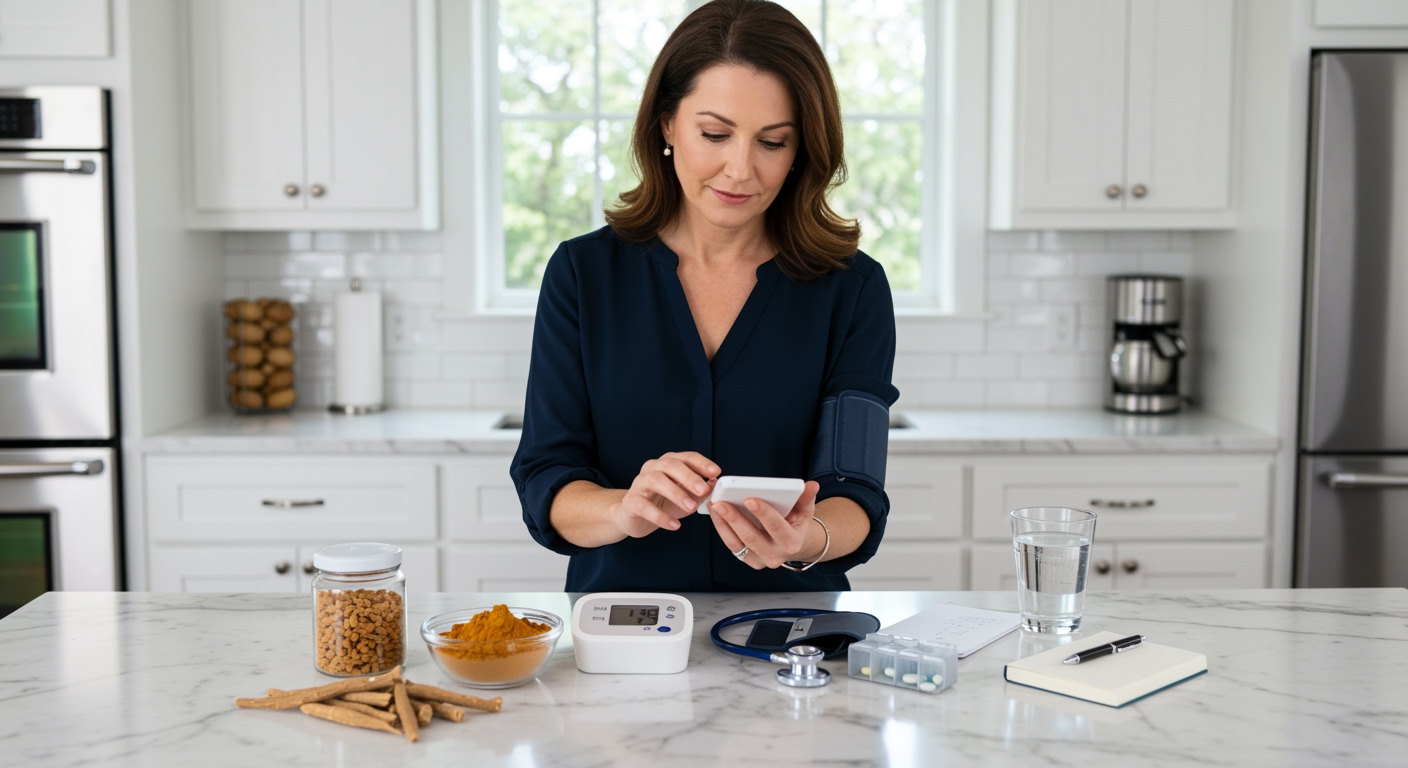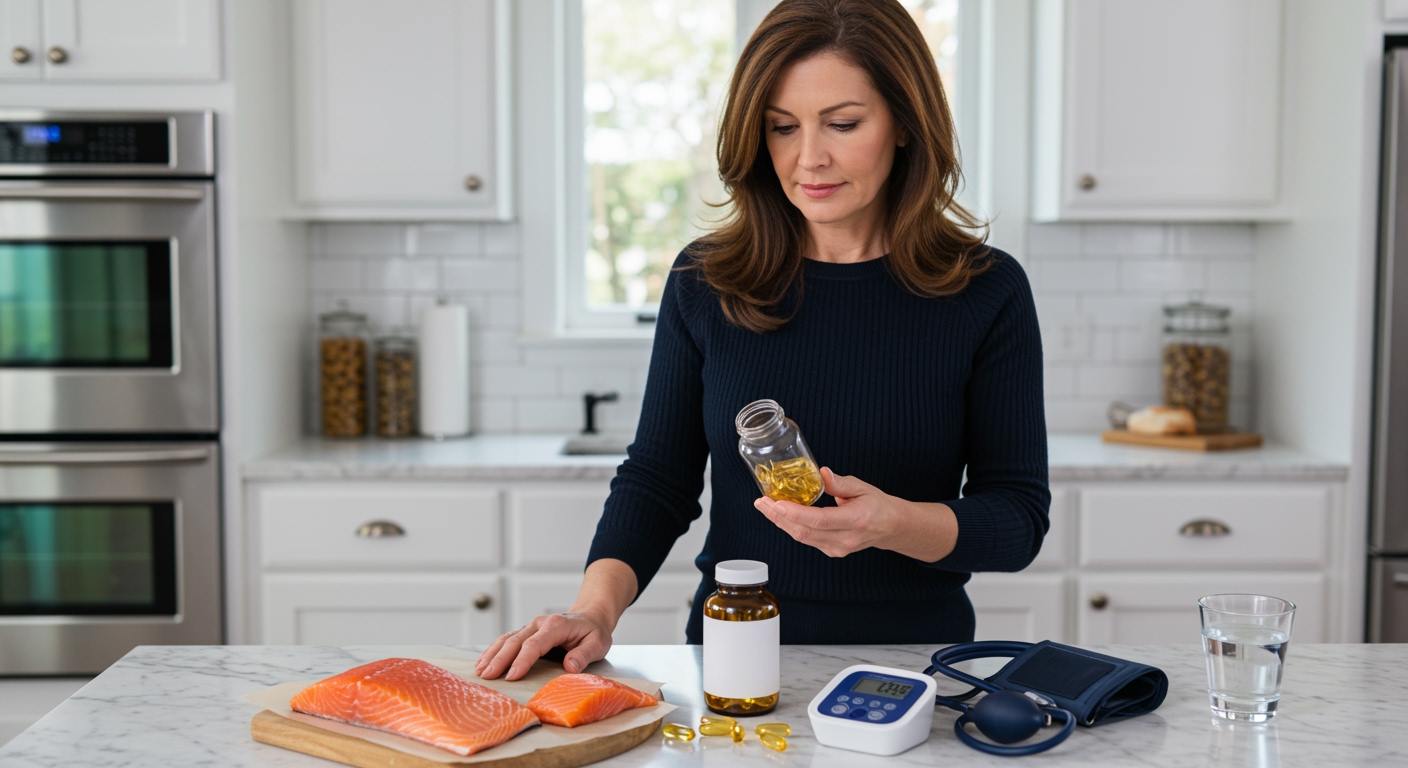✪ Key Takeaway: People with hypertension should reduce sodium intake to 1500-2300mg daily, not eliminate it completely, as sodium is essential for proper body function.
Introduction
Your doctor just told you that you have high blood pressure, and suddenly everyone is telling you to throw out your salt shaker forever.
You might be wondering if you really need to avoid all sodium or if there is a smarter way to manage your blood pressure without making your food taste like cardboard.
Hi, I am Abdur, your nutrition coach, and today I am going to explain why complete sodium avoidance is not only unnecessary but potentially dangerous for people with hypertension, and show you the evidence-based approach that actually works.
Why Does Your Body Actually Need Sodium?
Your body requires sodium to survive, and eliminating it completely would create serious health problems within days.
Sodium helps maintain proper fluid balance in your cells, which keeps your blood volume at healthy levels and prevents dangerous drops in blood pressure.
Your muscles need sodium to contract properly, including your heart muscle, which means too little sodium can actually cause irregular heartbeats and muscle weakness.
Sodium also helps your nervous system send signals throughout your body, controlling everything from your reflexes to your ability to think clearly.
When you eliminate sodium completely, your body goes into crisis mode and starts retaining every bit of sodium it can find, which often leads to worse blood pressure control.
Research shows that people who consume less than 1000mg of sodium per day actually have higher rates of heart disease and stroke than those who consume moderate amounts.
✪ Fun Fact: Your body contains about one teaspoon of salt at all times, and losing too much through sweating without replacement can cause dangerous electrolyte imbalances.
What Happens When You Eat Too Much Sodium?
Eating too much sodium causes your body to hold onto extra water, which increases the volume of blood flowing through your arteries.
This extra blood volume forces your heart to work harder to pump blood, and it puts more pressure on your artery walls, leading to higher blood pressure readings.
Your kidneys struggle to filter out the excess sodium, which can damage these vital organs over time and reduce their ability to regulate blood pressure naturally.
High sodium intake also makes your blood vessels less flexible, causing them to become stiff and narrow, which further increases blood pressure.
The average American consumes about 3400mg of sodium daily, which is nearly double the recommended amount for people with hypertension.
Most of this excess sodium comes from processed foods, restaurant meals, and packaged snacks rather than the salt shaker on your table.
✪ Pro Tip: One slice of bread contains about 150mg of sodium, while a single pickle can have over 300mg, showing how quickly sodium adds up in everyday foods.
How Much Sodium Should You Actually Consume?
The American Heart Association recommends that people with hypertension consume no more than 1500mg of sodium per day, which is about two-thirds of a teaspoon of salt.
However, many health experts agree that staying under 2300mg daily is a more realistic and sustainable goal for most people with high blood pressure.
Your individual sodium needs may vary based on your age, activity level, climate, and how sensitive your blood pressure is to sodium changes.
Some people are salt-sensitive, meaning their blood pressure responds dramatically to sodium intake, while others show minimal changes even with higher consumption.
The key is finding your personal sweet spot where you consume enough sodium for proper body function but not so much that it raises your blood pressure.
Working with your doctor to monitor your blood pressure while gradually reducing sodium intake helps you discover what works best for your body.
✪ Note: People who exercise regularly or live in hot climates may need slightly more sodium to replace what they lose through sweat.
Which Foods Should You Focus On Instead?
Focus on eating more potassium-rich foods like bananas, spinach, and sweet potatoes, which help counteract sodium’s effects on blood pressure.
Fresh fruits and vegetables naturally contain very little sodium while providing essential nutrients that support healthy blood pressure levels.
Choose whole grains over processed grain products, as they contain less sodium and more fiber, which helps lower blood pressure naturally.
Lean proteins like chicken breast, fish, and beans are naturally low in sodium and provide the building blocks your body needs for healthy blood vessels.
Avoid processed meats, canned soups, frozen dinners, and restaurant meals, which are the biggest sources of hidden sodium in most people’s diets.
When you do use salt, choose high-quality sea salt or pink Himalayan salt, and use herbs and spices to add flavor without adding sodium.
Reading nutrition labels becomes crucial because sodium hides in unexpected places like bread, breakfast cereals, and even some medications.
✪ Pro Tip: Rinse canned beans and vegetables under cold water for 30 seconds to remove up to 40% of their sodium content.
What Are The Risks Of Going Too Low?
Consuming less than 1000mg of sodium daily can lead to hyponatremia, a dangerous condition where your blood sodium levels become too low.
Low sodium levels can cause confusion, headaches, muscle cramps, and in severe cases, seizures or coma.
Your body may respond to very low sodium intake by increasing production of hormones that actually raise blood pressure, defeating your original goal.
People who drastically cut sodium often experience fatigue, dizziness, and weakness because their body cannot maintain proper fluid balance.
Research shows that both very high and very low sodium intake increase the risk of cardiovascular events, creating a U-shaped curve where moderation is safest.
Athletes and people who sweat heavily need more sodium replacement, and going too low can lead to dangerous electrolyte imbalances during physical activity.
✪ Fun Fact: Your taste buds adapt to lower sodium levels within 2-3 weeks, making foods taste more flavorful naturally without needing as much salt.
The Bottom Line
People with hypertension should reduce their sodium intake to 1500-2300mg daily rather than eliminating it completely, as sodium is essential for proper body function and complete avoidance can create serious health problems.
As I always tell my clients, moderation beats elimination every time because your body needs balance, not extremes, to function at its best.
I would love to hear about your experience managing sodium intake with high blood pressure, so please share your questions, challenges, or success stories in the comments below.
References
At NutritionCrown, we use quality and credible sources to ensure our content is accurate and trustworthy. Below are the sources referenced in creating this article:
- European Society of Cardiology: Salt and Hypertension Current Views
- American Heart Association: Hypertension Research on Sodium Intake
- National Heart, Lung, and Blood Institute: 5 Ways to Cut Down Sodium and Improve Heart Health
- PubMed Central: Sodium Intake and Cardiovascular Health





